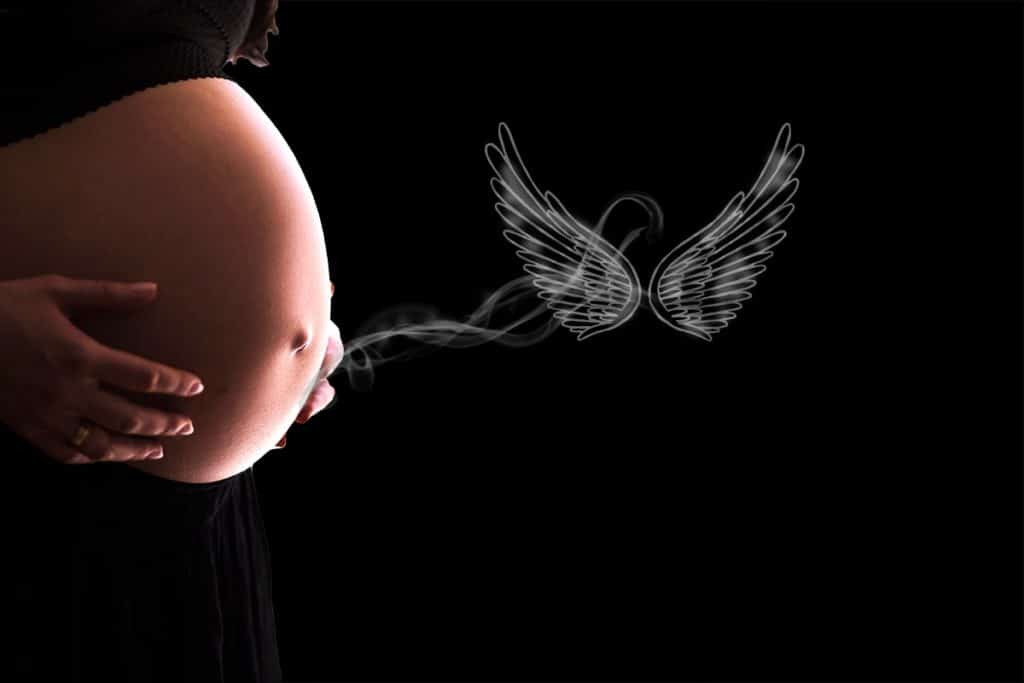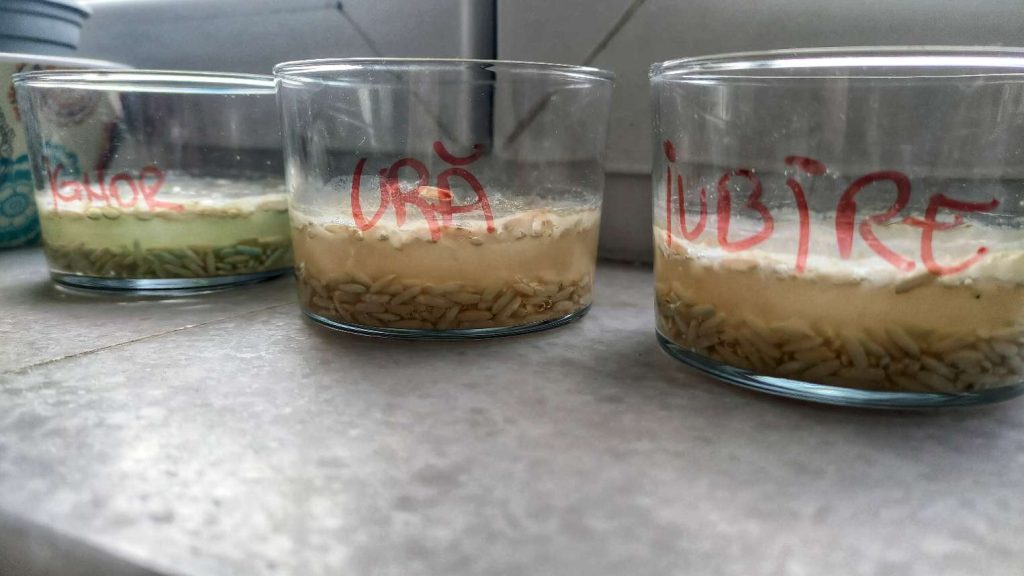Nu sunt fumatoare si nici nu am fumat vreodata, deci imi este greu sa stiu cat ii este de greu unei viitoare mamici sa se lase de fumat.
Totusi, am doua prietene foarte bune, fumatoare convinse, care atunci cand si-au dorit copii au incetat sa fumeze cu ceva timp inainte de a ramane insarcinate. Nu au fumat nici macat o tigara in timpul sarcinii sau cat au alaptat.
Gandindu-ma la ele si la cat de pro fumat au fost o viata intreaga si la cum au spus stop fara sa stea prea mult pe ganduri, ma intreb de ce nu toate mamicile nu sunt la fel de contiente de efectele devastatoare pe care le poate avea fumatul in perioada sarcinii.
Zilele trecute am auzit o discutie intre doua mamici care se intrebau cat de afectat poate fi copilul daca ele fumeaza chiar daca alapteaza… Una dintre ele sustinea chiar ca are acordul medicului si amandoua recunosteau ca au fumat chiar si in perioada sarcinii, spunand: ‘Ce i se poate intampla, va fi si el fumator..’
[row]
[col span=”6″ span__sm=”12″]
[/col]
[col span=”6″ span__sm=”12″]
Ca sa ii raspund mamicii care se intreba, cei mai multi copii de mamici fumatoare vor deveni fumatori. (Coincidenta sau nu, parintii mei sunt nefumatori).
Cand m-am intors acasa mi-am sunat medicul sa o intreb daca vreun doctor ar da un astfel de consimtamant. Mi-a raspuns ca refuza sa creada ca exista astfel de medici.
[/col]
[/row]
[ux_image id=”3973″ image_size=”original”]
Cum poate sa afecteze fumatul in sarcina dezvoltarea bebelusului intrauterin sau dupa nastere?
Lista este lunga:
1. Poate afecta dezvoltarea plamanilor si a creierului pe termen lung, afectiuni ce pot avea repercursiuni intreaga viata (afectiuni pulmonare, paralizie cerebrala)
2. Dubleaza riscul de sangerare in timpul nasterii, ceea ce pune in pericol viata fatului dar si a mamei (risc crescut de infectii)
3. Creste riscul de a se naste copilul cu diverse defecte precum: buza de iepure, afectiune ce ii afecteaza modul de a manca si poate fi corectat doar prin chirurgie.
4. Bebelusii nascuti din mame fumatoare au o rata cu 20-30% mai mare sa se nasca cu maini sau picioare mai scurte sau lipsa sau cu forma capului sau a fetei anormala fata de cei nascuti din mama nefumatoare.
5. Copiii nascuti din mame sau chiar BUNICI fumatoare au un risc crescut de a dezvolta astm (afectiuni respiratorii)
6. Fumatul in sarcina poate dezvolta un risc crescut spre obezitate la bebelusi
7. Creste riscul de nastere prematura, aceasta fiind cauza diverselor afectiuni ce pot duce la deces
8. 1 bebelus din 5 se va naste cu greutate mica din cauza fumatului din sarcina a mamei. Copiii cu greutate scazuta nu sunt asa de sanatosi si vir recupera greu
9. Copiii nascuti din mame fumatoare au un risc mai mare de a deceda din cauza sindromului mortii subite decat cei care nu au fost expusi fumului de tigara
10. Copiii au un risc crescut de orbire
[ux_banner height=”120px” bg=”3941″ bg_overlay=”rgba(0, 0, 0, 0.17)”]
[text_box width=”66″ position_x=”50″ position_y=”50″ bg=”rgba(0, 165, 62, 0.85)”]
Implica-te activ! Fa si tu parte din proiect!
[/text_box]
[/ux_banner]
11. Risc crescut de retard mintal, tulburari neurologice si de invatare, tulburari de comportament, ADHD
12. Risc crescut de cancer hepatic sau leucemie (in special leucemie limfatica acuta)
13. Risc crescut de a dezvolta alergii in copilarie
14. Risc crescut de a face colici
15. Efectul carcinogen al fumului de tigara se transmite fatului care creste riscul de a dezvolta (in timp, se poate vedea si la cativa ani) diverse neoplazii (tumori).
[ux_banner height=”300px” bg_overlay=”rgba(0, 0, 0, 0.17)”]
[text_box width=”78″ width__sm=”92″ position_x=”50″ position_y=”50″]
Conform OMS (Organizatia Mondiala a Sanatatii) 15% dintre femeile din tarile dezvoltate fumeaza
(1 femeie insarcinata din 5 fumeaza!)
[/text_box]
[/ux_banner]
Fumul de tigara contine aproximativ 7000 de substante chimice dintre care 250 otravitoare si 70 cancerigene. Cele mai periculoase stim cu toti ca sunt nicotina si monoxidul de carbon.
Atunci cand mama fumeaza o parte din oxigenul din sange este inlocuit cu un gaz toxic, ce rezulta din ardere. Aceste substante toxice afecteaza bebelusul provocandu-i batai de inima mai rapide, afecteaza placenta prin care fatul este conectat la mama.
[ux_banner height=”250px”]
[text_box width=”80″ position_x=”50″ position_y=”50″]
Stiai ca fumatul afecteaza volumul de lapte atunci cand alaptezi? Un bebelus alaptat de o mama fumatoare este mai agitat si doarme mai putin comparativ cu bebelusii din mamici nefumatoare.
[/text_box]
[/ux_banner]
[row]
[col span=”6″ span__sm=”12″]
Daca o viitoare mama reuseste sa se opreasca din fumat in prima jumatate a sarcinii, organismul fatului are capacitatea de a se restabili, avand sanse aproape la fel de mari ca si la femeile nefumatoare sa se nasca normal!
NU, nu este suficient sa scazi numarul de tigari (desi am auzit si aceasta varianta ‘Nu mai fumez un pachet, ci doar dimineata la cafea’). Chiar si un fumat in cantitate moderata poate afecta sanatatea copilului, efectele fiind aceleasi.
Multa grija si iubire!
[/col]
[col span=”6″ span__sm=”12″]
[/col]
[/row]
[ux_banner height=”200px”]
[text_box width=”80″ position_x=”50″ position_y=”50″]
‘Nimic nu este mai gresit decat sa fumezi langa copil si sa-l faci fumator pasiv. Imagineaza-ti ca in burtica este fumator cot la cot cu tine!’
[/text_box]
[/ux_banner]
[ux_banner height=”500px” bg=”3909″ bg_color=”rgb(255, 255, 255)”]
[text_box width=”40″ width__sm=”60″ position_x=”10″ position_y=”50″]
Afla despre fumatul in sarcina
[/text_box]
[/ux_banner]
[accordion title=”Referinte”]
[accordion-item title=”Studii”]
| 1 | US Surgeon GeneralU.S. Department of Health and Human Services, 2010 How Tobacco Smoke Causes Disease: The Biology and Behavioral Basis for Smoking–Attributable Disease. A Report of the Surgeon General. Public Health Service. Office of the Surgeon General |
| 2 | US Surgeon GeneralDepartment of Health and Human Services, Women and smoking, 2001RockvilleDHHS A report of the US Surgeon General |
| 3 | Smedts HP, de Vries JH, Rakhshandehroo M, Wildhagen MF, Verkleij–Hagoort AC, Steegers EA. Steegers–Theunissen RPHigh maternal vitamin E intake by diet or supplements is associated with congenital heart defects in the offspring, BJOG: An International Journal of Obstetrics & Gynaecology , 2009, vol. 116 (pg. 416-423) |
| 4 | Reefhuis J, de Walle HE, Cornel MC. Maternal smoking and deformities of the foot: results of the EUROCAT Study, Am J Public Health , 1998, vol. 88 (pg. 1554-1555) European Registries of Congenital Anomalies |
| 5 | Himmelberger DU, Brown BWJr., cohen EN. Cigarette smoking during pregnancy and the occurrence of spontaneous abortion and congenital abnormality, Am J Epidemiol , 1978, vol. 108 (pg. 470-479) |
| 6 | Liu S, Liu J, Tang J, Ji J, Chen J, Liu C. Environmental risk factors for congenital heart disease in the Shandong Peninsula, China: a hospital–based case–control study, J Epidemiol , 2009, vol. 19 (pg. 122-130) |
| 7 | Butler NR, Alberman ED. , Perinatal Problems: The second report of the 1958 British Perinatal Mortality Survey , 1969Edinburgh & LondonE&S Livingstone Ltd |
| 8 | Carmichael SL, Shaw GM. Maternal life event stress and congenital anomalies, Epidemiology , 2000, vol. 11 (pg. 30-35) |
| 9 | Nørgaard M, Wogelius P, Pedersen L, Rothman KJ, Sørensen HT. Maternal use of oral contraceptives during early pregnancy and risk of hypospadias in male offspring, Urology , 2009, vol. 74 (pg. 583-587) |
| 10 | Quinton AE, Cook CM, Peek MJ. The relationship between cigarette smoking, endothelial function and intrauterine growth restriction in human pregnancy, BJOG , 2008, vol. 115 (pg. 780-784) |
| 11 | Felix JF, van Dooren MF, Klaassens M, Hop WC, Torfs CP, Tibboel D. Environmental factors in the etiology of esophageal atresia and congenital diaphragmatic hernia: results of a case–control study, Birth Defects Res , 2008, vol. 82 (pg. 98-105) |
| 12 | Chambers CD, Chen BH, Kalla K, Jernigan L, Jones KL. Novel risk factor in gastroschisis: change of paternity, Am J Med Genet A , 2007, vol. 143 (pg. 653-659) |
| 13 | Underwood P, Hester LL, Laffitte TJr., Gregg KV. The relationship of smoking to the outcome of pregnancy, Am J Obstet Gynecol , 1965, vol. 91 (pg. 270-276) |
| 14 | Ericson A, Kallen B, Westerholm P. Cigarette smoking as an etiologic factor in cleft lip and palate, Am J Obstet Gynecol , 1979, vol. 135 (pg. 348-351) |
| 15 | Tuthill DP, Stewart JH, Coles EC, Andrews J, Cartlidge PH. Maternal cigarette smoking and pregnancy outcome, Paediatr Perinat Epidemiol , 1999, vol. 13 (pg. 245-253) |
| 16 | Werler MM, Mitchell AA, Shapiro S, Werler MM, Mitchell AA, Shapiro S. Demographic, reproductive, medical, and environmental factors in relation to gastroschisis, Teratology , 1992, vol. 45 (pg. 353-360) |
| 17 | Damgaard IN, Jensen TK. Nordic Cryptorchidism Study Group, Petersen JH, Skakkebaek NE, Toppari J, Main KMRisk factors for congenital cryptorchidism in a prospective birth cohort study, PLoS ONE [Electronic Resource] , 2008, vol. 3 pg. e3051 |
| 18 | Brouwers MM, Feitz WF, Roelofs LA, Kiemeney LA, de Gier RP, Roeleveld N. Risk factors for hypospadias, Eur J Pediatr , 2007, vol. 166 (pg. 671-678) |
| 19 | Tuohy PG, Counsell AM, Geddis DC. The Plunket National Child Health Study: birth defects and sociodemographic factors, N Z Med J , 1993, vol. 106 (pg. 489-492) |
| 20 | Tong VT, Jones JR, Dietz PM, D’Angelo D, Bombard JM. Trends in smoking before, during, and after pregnancy – Pregnancy Risk Assessment Monitoring System (PRAMS), United States, 31 sites, 2000–2005, Morbidity and mortality weekly report. Centers for Disease Control and Prevention , 2009, vol. 29 SS–4 |
| 21 | Honein MA, Paulozzi LJ, Watkins ML. Maternal smoking and birth defects: validity of birth certificate data for effect estimation, Public Health Rep , 2001, vol. 116 (pg. 327-335) |
| 22 | Tikkanen J, Heinonen OP. Maternal exposure to chemical and physical factors during pregnancy and cardiovascular malformations in the offspring, Teratology , 1991, vol. 43 (pg. 591-600) |
| 23 | PRISMA guidelines for reporting meta–analyses of observational studies – http://www.prisma-statement.org/ |
| 24 | Berkowitz GS, Lapinski RH. Risk factors for cryptorchidism: a nested case–control study, Paediatr Perinat Epidemiol , 1996, vol. 10 (pg. 39-51) |
| 25 | The NS, Honein MA, Caton AR, Moore CA, Siega–Riz AM, Druschel CM. Risk factors for isolated biliary atresia, National Birth Defects Prevention Study, 1997–2002, Am J Med Genet A , 2007, vol. 143A (pg. 2274-2284) |
| 26 | Saxen I. Cleft lip and palate in Finland: parental histories, course of pregnancy and selected environmental factors, Int J Epidemiol , 1974, vol. 3 (pg. 263-270) |
| 27 | Tata LJ, Lewis SA, McKeever TM, Smith CJ, Doyle P, Smeeth L, Gibson JE, Hubbard RB. Effect of maternal asthma, exacerbations and asthma medication use on congenital malformations in offspring: a UK population–based study, Thorax , 2008, vol. 63 (pg. 981-987) |
| 28 | Schmidt RJ, Romitti PA, Burns TL, Browne ML, Druschel CM, Olney RS. Maternal caffeine consumption and risk of neural tube defects, Birth Defects Res , 2009, vol. 85 (pg. 879-889) |
| 29 | US Surgeon GeneralDepartment of Health and Human Services, The health consequences of smoking, 2004RockvilleDHHS A report of the US Surgeon General |
| 30 | Tamura T, Munger RG, Corcoran C, Bacayao JY, Nepomuceno B, Solon F. Plasma zinc concentrations of mothers and the risk of nonsyndromic oral clefts in their children: a case–control study in the Philippines, Birth Defects Res , 2005, vol. 73 (pg. 612-616) |
| 31 | Watkins ML, Rasmussen SA, Honein MA, Botto LD, Moore CA. Maternal obesity and risk for birth defects, Pediatrics , 2003, vol. 111 (pg. 1152-1158) |
| 32 | Golding J, Butler NR. Maternal smoking and anencephaly, Br Med J Clin Res Ed , 1983, vol. 287 (pg. 533-534) |
| 33 | Salemi JL, Pierre M, Tanner JP, Kornosky JL, Hauser KW, Kirby RS, Carver JD. Maternal nativity as a risk factor for gastroschisis: a population–based study, Birth Defects Res , 2009, vol. 85 (pg. 890-896) |
| 34 | Khoury MJ, Gomez–Farias M, Mulinare J. Does maternal cigarette smoking during pregnancy cause cleft lip and palate in offspring?, Am J Dis Child , 1989, vol. 143 (pg. 333-337) |
| 35 | Higgins JPT, Thompson SG, Deeks JJ, Altman DG. Measuring inconsistency in meta–analyses, BMJ , 2003, vol. 327 (pg. 557-560) |
| 36 | Wehby GL, Cassell CH. The impact of orofacial clefts on quality of life and healthcare use and costs, Oral Dis , 2010, vol. 16 (pg. 3-10) |
| 37 | Shi M, Christensen K, Weinberg CR, Romitti P, Bathum L, Lozada A, Morris RW, Lovett M, Murray JC. Orofacial cleft risk is increased with maternal smoking and specific detoxification–gene variants, Am J Hum Genet , 2007, vol. 80 (pg. 76-90) |
| 38 | Evans DR, Newcombe RG, Campbell H. Maternal smoking habits and congenital malformations: a population study, Br Med J , 1979, vol. 2 (pg. 171-173) |
| 39 | Talbot P. In vitro assessment of reproductive toxicity of tobacco smoke and its constituents, Birth Defects Res C Embryo Today , 2008, vol. 84 (pg. 61-72) |
| 40 | Honein MA, Paulozzi LJ, Moore CA. Family history, maternal smoking, and clubfoot: an indication of a gene–environment interaction, Am J Epidemiol , 2000, vol. 152 (pg. 658-665) |
| 41 | Wasserman CR, Shaw GM, O’Malley CD, Tolarova MM, Lammer EJ. Parental cigarette smoking and risk for congenital anomalies of the heart, neural tube, or limb, Teratology , 1996, vol. 53 (pg. 261-267) |
| 42 | Werler MM, Bower C, Payne J, Serna P. Findings on potential teratogens from a case–control study in Western Australia, Aust N Z J Obstet Gynaecol , 2003, vol. 43 (pg. 443-447) |
| 43 | Kurahashi N, Kasai S, Shibata T, Kakizaki H, Nonomura K, Sata F, Kishi R. Parental and neonatal risk factors for cryptorchidism, Med Sci Monit , 2005, vol. 11 (pg. CR274-CR283) |
| 44 | Alderman BW, Takahashi ER, LeMier MK. Risk indicators for talipes equinovarus in Washington State, 1987–1989, Epidemiology , 1991, vol. 2 (pg. 289-292) |
| 45 | Lieff S, Olshan AF, Werler M, Strauss RP, Smith J, Mitchell A. Maternal cigarette smoking during pregnancy and risk of oral clefts in newborns, Am J Epidemiol , 1999, vol. 150 (pg. 683-694) |
| 46 | Shaw GM, Wasserman CR, Lammer EJ, O’Malley CD, Murray JC, Basart AM, Tolarova MM. Orofacial clefts, parental cigarette smoking, and transforming growth factor–alpha gene variants, Am J Hum Genet , 1996, vol. 58 (pg. 551-561) |
| 47 | Czeizel A, Vitez M. Etiological study of omphalocele, Hum Genet , 1981, vol. 58 (pg. 390-395) |
| 48 | Yushkiv N, Honein MA, Moore CA. Reported multivitamin consumption and the occurrence of multiple congenital anomalies, Am J Med Genetics , 2005, vol. 136A (pg. 1-7) |
| 49 | Linn S, Schoenbaum SC, Monson RR, Rosner B, Stubblefield PG, Ryan KJ. Lack of association between contraceptive usage and congenital malformations in offspring, Am J Obstet Gynecol , 1983, vol. 147 (pg. 923-928) |
| 50 | Jones ME, Swerdlow AJ, Griffith M, Goldacre MJ. Prenatal risk factors for cryptorchidism: a record linkage study, Paediatr Perinat Epidemiol , 1998, vol. 12 (pg. 383-396) |
| 51 | McBride ML, Van den Steen N, Lamb CW, Gallagher RP. Maternal and gestational factors in cryptorchidism, Int J Epidemiol , 1991, vol. 20 (pg. 964-970) |
| 52 | Jensen MS, Toft G, Thulstrup AM, Bonde JP, Olsen J. Cryptorchidism according to maternal gestational smoking, Epidemiology , 2007, vol. 18 (pg. 220-225) |
| 53 | Wyszynski DF, Duffy DL, Beaty TH. Maternal cigarette smoking and oral clefts: a meta–analysis, Cleft Palate Craniofac J , 1997, vol. 34 (pg. 206-210) |
| 54 | Mandiracioglu A, Ulman I, Luleci E, Ulman C. The incidence and risk factors of neural tube defects in Izmir, Turkey: a nested case–control study, Turk J Pediatr , 2004, vol. 46 (pg. 214-220) |
| 55 | Adams MM, Mulinare J, Dooley K. Risk factors for conotruncal cardiac defects in Atlanta, J Am Coll Cardiol , 1989, vol. 14 (pg. 432-442) |
| 56 | Laumon B, Martin JL, Collet P, Bertucat I, Verney MP, Robert E. Exposure to organic solvents during pregnancy and oral clefts: a case–control study. [Erratum appears in Reprod Toxicol, Reprod Toxicol , 1996, vol. 10 (pg. 15-19) 1996. May–Jun;10(3):vi] |
| 57 | Wang W, Guan P, Xu W, Zhou B. Risk factors for oral clefts: a population–based case–control study in Shenyang, China, Paediatr Perinat Epidemiol , 2009, vol. 23 (pg. 310-320) |
| 58 | Bell R, Lumley J. Alcohol consumption, cigarette smoking and fetal outcome in Victoria, 1985, Community Health Stud , 1989, vol. 13 (pg. 484-491) |
| 59 | Malloy MH, Kleinman JC, Bakewell JM, Schramm WF, Land GH. Maternal smoking during pregnancy: no association with congenital malformations in Missouri 1980–83, Am J Public Health , 1989, vol. 79 (pg. 1243-1246) |
| 60 | Carmichael SL, Nelson V, Shaw GM, Wasserman CR, Croen LA. Socio–economic status and risk of conotruncal heart defects and orofacial clefts, Paediatr Perinat Epidemiol , 2003, vol. 17 (pg. 264-271) |
| 61 | Hearey CD, Harris JA, Usatin MS, Epstein DM, Ury HK, Neutra RR. Investigation of a cluster of anencephaly and spina bifida, Am J Epidemiol , 1984, vol. 120 (pg. 559-564) |
| 62 | Little J, Cardy A, Munger RG. Tobacco smoking and oral clefts: a meta–analysis, Bull World Health Organ , 2004, vol. 82 (pg. 213-218) |
| 63 | Czeizel AE, Kodaj I, Lenz W. Smoking during pregnancy and congenital limb deficiency, BMJ , 1994, vol. 308 (pg. 1473-1476) |
| 64 | Garcia AM, Fletcher T, Benavides FG, Orts E. Parental agricultural work and selected congenital malformations, Am J Epidemiol , 1999, vol. 149 (pg. 64-74) |
| 65 | Johansen AM, Wilcox AJ, Lie RT, Andersen LF, Drevon CA. Maternal consumption of coffee and caffeine–containing beverages and oral clefts: a population–based case–control study in Norway, Am J Epidemiol , 2009, vol. 169 (pg. 1216-1222) |
| 66 | Rogers JM. Tobacco and pregnancy, Reprod Toxicol , 2009, vol. 28 (pg. 152-160) |
| 67 | Watkins ML, Scanlon KS, Mulinare J, Khoury MJ. Is maternal obesity a risk factor for anencephaly and spina bifida?, Epidemiology , 1996, vol. 7 (pg. 507-512) |
| 68 | Krapels IP, Raijmakers–Eichhorn J, Peters WH, Roelofs HM, Ras F, Steegers–Theunissen RP. Eurocran Gene–Environment Interaction GroupThe I,105V polymorphism in glutathione S–transferase P1, parental smoking and the risk for nonsyndromic cleft lip with or without cleft palate, Eur J Hum Genet , 2008, vol. 16 (pg. 358-366) |
| 69 | Mitchell LE, Murray JC, O’Brien S, Christensen K. Evaluation of two putative susceptibility loci for oral clefts in the Danish population, Am J Epidemiol , 2001, vol. 153 (pg. 1007-1015) |
| 70 | Man LX, Chang B. Maternal cigarette smoking during pregnancy increases the risk of having a child with a congenital digital anomaly, Plast Reconst Surg , 2006, vol. 117 (pg. 301-308) |
| 71 | Miller EA, Manning SE, Rasmussen SA, Reefhuis J, Honein MA. National Birth Defects Prevention StudyMaternal exposure to tobacco smoke, alcohol and caffeine, and risk of anorectal atresia: National Birth Defects Prevention Study 1997–2003, Paediatr Perinat Epidemiol , 2009, vol. 23 (pg. 9-17) |
| 72 | Lorente C, Cordier S, Goujard J, Aymé S, Bianchi F, Calzolari E, De Walle HE, Knill–Jones R. Tobacco and alcohol use during pregnancy and risk of oral clefts, Am J Public Health , 2000, vol. 90 (pg. 415-419) |
| 73 | Parker SE, Mai CT, Canfield MA, Rickard R, Wang Y, Meyer RE, Anderson P, Mason CA, Collins JS, Kirby RS, Correa A. the National Birth Defects Prevention NetworkUpdated national birth prevalence estimates for selected birth defects in the United States, 2004–2006 Birth Defects Res A Clin Mol Teratol 2010 Sep 28. http://www.cdc.gov/ncbddd/features/birthdefects-keyfindings.html. |
| 74 | Szendrey T, Danyi G, Czeizel A. Etiological study on isolated esophageal atresia, Hum Genet , 1985, vol. 70 (pg. 51-8) |
| 75 | Little J, Cardy A, Arslan MT, Gilmour M, Mossey PA. Smoking and orofacial clefts: a United Kingdom–based case–control study, Cleft Palate Craniofac J , 2004, vol. 41 (pg. 381-386) |
| 76 | Alderman BW, Bradley CM, Greene C, Fernbach SK, Baron AE. Increased risk of craniosynostosis with maternal cigarette smoking during pregnancy, Teratology , 1994, vol. 50 13–18 |
| 77 | Grewal J, Carmichael SL, Ma C, Lammer EJ, Shaw GM. Maternal periconceptional smoking and alcohol consumption and risk for select congenital anomalies, Birth Defects Res , 2008, vol. 82 (pg. 519-526) |
| 78 | Christianson RE. The relationship between maternal smoking and the incidence of congenital anomalies, Am J Epidemiol , 1980, vol. 112 (pg. 684-695) |
| 79 | Carmichael SL, Ma C, Rasmussen SA, Honein MA, Lammer EJ, Shaw GM. Craniosynostosis and maternal smoking, Birth Defects Res , 2008, vol. 82 (pg. 78-85) |
| 80 | Rudnicka A, Wald NJ, Huttly W, Hackshaw AK. Influence of maternal smoking on the birth prevalence of Down syndrome and on second trimester screening performance, Prenat Diagn , 2002, vol. 22 (pg. 893-897) |
| 81 | Robbins JM, Bird TM, Tilford JM, Cleves MA, Hobbs CA. Hospital stays, hospital charges, and in–hospital deaths among infats with selected birth defects – United States, 2003, Morb Mortal Wkly Rep , 2007, vol. 56 (pg. 25-29) |
| 82 | Shipton D, Tappin DM, Vadiveloo T, Crossley JA, Aitken DA, Chalmers J. Reliability of self reported smoking status by pregnant women for estimating smoking prevalence: a retrospective, cross sectional study, BMJ , 2009, vol. 339 b4347 . https://doi.org/10.1136/bmj.b4347 |
| 83 | REVMAN, 2008 Review Manager (RevMan) [Computer program]. Version 5.0. Copenhagen: The Nordic Cochrane Centre, The Cochrane Collaboration |
| 84 | Draper ES, Rankin J, Tonks A, Boyd P, Wellesley D, Tucker D, Budd J. BINOCAR Management CommitteeRecreational drug use: a major risk factor for gastroschisis?, Am J Epidemiol , 2008, vol. 167 (pg. 485-491) Feb 15 |
| 85 | March of Dimes http://www.marchofdimes.com/birthdefectsresearch.html (accessed December 2010) |
| 86 | Chung CS, Myrianthopoulos NC. Factors affecting risks of congenital malformations. I. Analysis of epidemiologic factors in congenital malformations. Report from the Collaborative Perinatal Project, Birth Defects: Orig Artic Ser , 1975, vol. 11 (pg. 1-22) |
| 87 | Kullander S, Kallen B. A Prospective Study of Smoking and Pregnancy, Acta Obstet Gynec Scand , 1971, vol. 50 (pg. 83-94) |
| 88 | Ormond G, Nieuwenhuijsen MJ, Nelson P, Toledano MB, Iszatt N, Geneletti S, Elliott P. Endocrine disruptors in the workplace, hair spray, folate supplementation, and risk of hypospadias: case–control study, Environ Health Perspect , 2009, vol. 117 (pg. 303-307) |
| 89 | Chung KC, Kowalski CP, Kim HM, Buchman SR. Maternal cigarette smoking during pregnancy and the risk of having a child with cleft lip/palate, Plast Reconstr Surg , 2000, vol. 105 (pg. 485-491) |
| 90 | Aro T. Maternal diseases, alcohol consumption and smoking during pregnancy associated with reduction limb defects, Early Hum Dev , 1983, vol. 9 (pg. 49-57) |
| 91 | Bower C, Miller M, Payne J, Serna P. Folate intake and the primary prevention of non–neural birth defects, Aust N Z J Public Health , 2006, vol. 30 (pg. 258-261) |
| 92 | Correy JF, Newman NM, Collins JA, Burrows EA, Burrows RF, Curran JT. Use of prescription drugs in the first trimester and congenital malformations, Aust NZ J Obstet Gynaecol , 1991, vol. 31 (pg. 340-344) |
| 93 | Oddsberg J, Jia C, Nilsson E, Ye W, Lagergren J. Maternal tobacco smoking, obesity, and low socioeconomic status during early pregnancy in the etiology of esophageal atresia, J Pediatr Surg , 2008, vol. 43 (pg. 1791-1795) |
| 94 | Verkerk PH, Buitendijk SE, Verloove–Vanhorick SP. Differential misclassification of alcohol and cigarette consumption by pregnancy outcome, Int J Epidemiol , 1994, vol. 23 (pg. 1218-1225) |
| 95 | Blatter BM, Roeleveld N, Zielhuis GA, Gabreels FJ, Verbeek AL. Maternal occupational exposure during pregnancy and the risk of spina bifida, Occup Environ Med , 1996, vol. 53 (pg. 80-86) |
| 96 | Office for National Statistics (National Congenital Anomaly System), 2010 Congenital anomaly statistics: notifications England and Wales 2008 (series MB3 no. 23) |
| 97 | Kallen K. Maternal smoking and craniosynostosis, Teratology , 1999, vol. 60 (pg. 146-150) |
| 98 | Heinonen OP. Birth Defects and Drugs in Pregnancy, 1977Publishing Sciences Group, Inc. |
| 99 | Davies TW, Williams DR, Whitaker RH. Risk factors for undescended testis, Int J Epidemiol , 1986, vol. 15 (pg. 197-201) |
| 100 | van Rooij IA, Groenen PM, van Drongelen M, Te Morsche RH, Peters WH, Steegers–Theunissen RP. Orofacial clefts and spina bifida: N–acetyltransferase phenotype, maternal smoking, and medication use, Teratology , 2002, vol. 66 (pg. 260-266) |
| 101 | Porter MP, Faizan MK, Grady RW, Mueller BA. Hypospadias in Washington State: maternal risk factors and prevalence trends, Pediatrics , 2005, vol. 115 (pg. e495-499) |
| 102 | Carbone P, Giordano F, Nori F, Mantovani A, Taruscio D, Lauria L, Figà-Talamanca I.. The possible role of endocrine disrupting chemicals in the aetiology of cryptorchidism and hypospadias: a population–based case–control study in rural Sicily, Int J Androl , 2007, vol. 30 (pg. 3-13) |
| 103 | Goldbaum G, Daling J, Milham S. Risk factors for gastroschisis, Teratology , 1990, vol. 42 (pg. 397-403) |
| 104 | Czeizel AE, Petik D, Puho E. Smoking and alcohol drinking during pregnancy. The reliability of retrospective maternal self–reported information, Cent Eur J Public Health , 2004, vol. 12 (pg. 179-183) |
| 105 | Kallen K. Multiple malformations and maternal smoking, Paediatr Perinat Epidemiol , 2000, vol. 14 (pg. 227-233) |
| 106 | Wald NJ, Hackshaw AK. Doll R, Crofton J. Cigarette smoking: an epidemiological overview, Tobacco and Health , 1996, vol. 52 (pg. 3-11) British Medical Bulletin |
| 107 | Wyszynski DF, Wu T. Use of US birth certificate data to estimate the risk of maternal cigarette smoking for oral clefting, Cleft Palate Craniofac J , 2002, vol. 39 (pg. 188-192) |
| 108 | Hougland KT, Hanna AM, Meyers R, Null D. Increasing prevalence of gastroschisis in Utah, J Pediatr Surg , 2005, vol. 40 (pg. 535-540) |
| 109 | Virtanen HE, Tapanainen AE, Kaleva MM, Suomi AM, Main KM, Skakkebaek NE, Toppari J. Mild gestational diabetes as a risk factor for congenital cryptorchidism, J Clin Endocrinol Metab , 2006, vol. 91 (pg. 4862-4865) |
| 110 | Czeizel A. The primary prevention of birth defects: multivitamins or folic acid?, Int J Med Sci , 2005, vol. 1 (pg. 50-61) |
| 111 | Shaw GM, Malcoe LH, Swan SH, Cummins SK, Schulman J. Congenital cardiac anomalies relative to selected maternal exposures and conditions during early pregnancy, Eur J Epidemiol , 1992, vol. 8 (pg. 757-760) |
| 112 | Torp–Pedersen T, Boyd HA, Poulsen G, Haargaard B, Wohlfahrt J, Holmes JM, Melbye M. In–utero exposure to smoking, alcohol, coffee, and tea and risk of strabismus, Am J Epidemiol , 2010, vol. 171 (pg. 868-875) |
| 113 | Preiksa RT, Zilaitiene B, Matulevicius V, Skakkebaek NE, Petersen JH, Jorgensen N, Toppari J. Higher than expected prevalence of congenital cryptorchidism in Lithuania: a study of 1204 boys at birth and 1 year follow–up, Hum Reprod , 2005, vol. 20 (pg. 1928-1932) |
| 114 | Hakim RB, Tielsch JM. Maternal cigarette smoking during pregnancy. A risk factor for childhood strabismus, Arch Ophthal , 1992, vol. 110 (pg. 1459-1462) |
| 115 | Office for National Statistics (ONS)The Information Centre Statistics on smoking: England 2006. Office for National Statistics, 2006. http://www.ic.nhs.uk/pubs/smokingeng2006/report/file. |
| 116 | Kelsey JL, Dwyer T, Holford TR, Bracken MB. Maternal smoking and congenital malformations: an epidemiological study, J Epidemiol Community Health , 1978, vol. 32 (pg. 102-107) |
| 117 | Biggs ML, Baer A, Critchlow CW. Maternal, delivery, and perinatal characteristics associated with cryptorchidism: a population–based case–control study among births in Washington State, Epidemiology , 2002, vol. 13 (pg. 197-204) |
| 118 | Hemminki K, Mutanen P, Saloniemi I, Luoma K. Congenital malformations and maternal occupation in Finland: multivariate analysis, J Epidemiol Community Health , 1981, vol. 35 (pg. 5-10) |
| 119 | Torfs CP, Velie EM, Oechsli FW, Bateson TF, Curry CJ. A population–based study of gastroschisis: demographic, pregnancy, and lifestyle risk factors, Teratology , 1994, vol. 50 (pg. 44-53) |
| 120 | Van den Eeden SK, Karagas MR, Daling JR, Vaughan TL. A case–control study of maternal smoking and congenital malformations, Paediatr Perinat Epidemiol , 1990, vol. 4 (pg. 147-155) |
| 121 | McGlynn KA, Graubard BI, Klebanoff MA, Longnecker MP. Risk factors for cryptorchism among populations at differing risks of testicular cancer, Int J Epidemiol , 2006, vol. 35 (pg. 787-795) |
| 122 | Woods SE, Raju U. Maternal smoking and the risk of congenital birth defects: a cohort study, J Am Board Fam Pract , 2001, vol. 14 (pg. 330-334) |
| 123 | Mygind H, Thulstrup AM, Pedersen L, Larsen H. Risk of intrauterine growth retardation, malformations and other birth outcomes in children after topical use of corticosteroid in pregnancy, Acta Obstet Gynecol Scand , 2002, vol. 81 (pg. 234-239) |
| 124 | Fernandez MF, Olmos B, Granada A, López–Espinosa MJ, Molina–Molina JM, Fernandez JM, Cruz M, Olea–Serrano F, Olea N. Human exposure to endocrine–disrupting chemicals and prenatal risk factors for cryptorchidism and hypospadias: a nested case–control study, Environ Health Perspect , 2007, vol. 115 Suppl 1(pg. 8-14) |
| 125 | Wong–Gibbons DL, Romitti PA, Sun L, Moore CA, Reefhuis J, Bell EM, Olshan AF. Maternal periconceptional exposure to cigarette smoking and alcohol and esophageal atresia +/– tracheo–esophageal fistula, Birth Defects Res , 2008, vol. 82 (pg. 776-784) |
| 126 | Shiono PH, Klebanoff MA, Berendes HW. Congenital malformations and maternal smoking during pregnancy, Teratology , 1986, vol. 34 (pg. 65-71) |
| 127 | Cardy AH, Barker S, Chesney D, Sharp L, Maffulli N, Miedzybrodzka Z. Pedigree analysis and epidemiological features of idiopathic congenital talipes equinovarus in the United Kingdom: a case–control study, BMC Musculoskelet Disord , 2007, vol. 8 pg. 62 |
| 128 | Williams L, Morrow B, Shulman H, Stephens R, D’Angelo D, Fowler CI. PRAMS 2002 Surveillance ReportAtlanta, GADivision of Reproductive Health National Center for Chronic Disease Prevention and Health Promotion, Centers for Disease Control and Prevention, 2006. http://www.cdc.gov/PRAMS/Reports.htm. |
| 129 | Shah NR, Bracken MB. A systematic review and meta–analysis of prospective studies on the association between maternal cigarette smoking and preterm delivery, Am J Obstet Gynecol , 2000, vol. 182 (pg. 465-472) |
| 130 | Werler MM, Sheehan JE, Mitchell AA. Association of vasoconstrictive exposures with risks of gastroschisis and small intestinal atresia, Epidemiology , 2003, vol. 14 (pg. 349-354) |
| 131 | Werler MM, Mitchell AA, Moore CA, Honein MA. National Birth Defects Prevention StudyIs there epidemiologic evidence to support vascular disruption as a pathogenesis of gastroschisis?, Am J Med Genet A , 2009, vol. 149A (pg. 1399-1406) |
| 132 | Li DK, Mueller BA, Hickok DE, Daling JR, Fantel AG, Checkoway H, Weiss NS. Maternal smoking during pregnancy and the risk of congenital urinary tract anomalies, Am J Public Health , 1996, vol. 86 (pg. 249-253) |
| 133 | Yerushalmy J. The relationship of parents’ cigarette smoking to outcome of pregnancy – implications as to the problem of inferring causation from the observed associations, Am J Epidemiol , 1971, vol. 93 (pg. 443-456) |
| 134 | Queisser–Luft A, Stolz G, Wiesel A, Schlaefer K, Spranger J. Malformations in newborn: results based on 30,940 infants and fetuses from the Mainz congenital birth defect monitoring system (1990–1998), Arch Gynecol Obstet , 2002, vol. 266 (pg. 163-167) |
| 135 | Werler MM, Pober BR, Holmes LB. Smoking and pregnancy, Teratology , 1985, vol. 32 (pg. 473-481) |
| 136 | Mori M, Davies TW, Tsukamoto T, Kumamoto Y, Fukuda K. Maternal and other factors of cryptorchidism–a case–control study in Japan, Kurume Med J , 1992, vol. 39 (pg. 53-60) |
| 137 | Yuan P, Okazaki I, Kuroki Y. Anal atresia: effect of smoking and drinking habits during pregnancy, Jpn J Hum Genet , 1995, vol. 40 (pg. 327-332) |
| 138 | Steinberger EK, Ferencz C, Loffredo CA. Infants with single ventricle: a population–based epidemiological study, Teratology , 2002, vol. 65 (pg. 106-115) |
| 139 | Lumley J, Correy JF, Newman NM, Curran JT. Cigarette smoking, alcohol consumption and fetal outcome in Tasmania 1981–82, Aust N Z J Obstet Gynaecol , 1985, vol. 25 (pg. 33-40) |
| 140 | Chew E, Remaley NA, Tamboli A, Zhao J, Podgor MJ, Klebanoff M. Risk factors for esotropia and exotropia, Arch Ophthalmol , 1994, vol. 112 (pg. 1349-1355) |
| 141 | Russo C. A. (Thomson Medstat) and Elixhauser, A. (AHRQ)Hospitalizations for Birth Defects, 2004 HCUP Statistical Brief #24. January 2007. U.S. Agency for Healthcare Research and Quality, Rockville, MD. http://www.hcup-us.ahrq.gov/reports/statbriefs/sb24.pdf. |
| 142 | Stoll C, Alembik Y, Roth MP, Dott B. Risk factors in congenital anal atresias, Ann Genet , 1997, vol. 40 (pg. 197-204) |
| 143 | Martinez–Frias ML, Rodriguez–Pinilla E, Prieto L. Prenatal exposure to salicylates and gastroschisis: a case–control study, Teratology , 1997, vol. 56 (pg. 241-243) |
| 144 | Werler MM, Starr JR, Cloonan YK, Speltz ML. Hemifacial microsomia: from gestation to childhood, J Craniofac Surg , 2009, vol. 20 Suppl 1(pg. 664-669) |
| 145 | Kallen B, Winberg J. An epidemiological study of hypospadias in Sweden, Acta Paediatr Scand Suppl , 1982, vol. 293 (pg. 1-21) |
| 146 | Pierik FH, Burdorf A, Deddens JA, Juttmann RE, Weber RF. Maternal and paternal risk factors for cryptorchidism and hypospadias: a case–control study in newborn boys, Environ Health Perspect , 2004, vol. 112 (pg. 1570-1576) |
| 147 | Mongraw–Chaffin ML, Cohn BA, Cohen RD, Christianson RE. Maternal smoking, alcohol consumption, and caffeine consumption during pregnancy in relation to a son’s risk of persistent cryptorchidism: a prospective study in the Child Health and Development Studies cohort, 1959–1967, Am J Epidemiol , 2008, vol. 167 (pg. 257-261) |
| 148 | Czeizel A, Nagy E. A recent aetiological study on facial clefting in Hungary, Acta Paediatr Hung , 1986, vol. 27 (pg. 145-166) |
| 149 | Parker SE, Mai CT, Strickland MJ, Olney RS, Rickard R, Marengo L, Wang Y, Hashmi SS, Meyer RE. Multistate study of the epidemiology of clubfoot, Birth Defects Res , 2009, vol. 85 (pg. 897-904) |
| 150 | Haddow JE, Palomaki GE, Holman MS. Young maternal age and smoking during pregnancy as risk factors for gastroschisis, Teratology , 1993, vol. 47 (pg. 225-228) |
| 151 | Lubs ML. Racial differences in maternal smoking effects on the newborn infant, Am J Obstet Gynecol , 1973, vol. 115 (pg. 66-76) |
| 152 | Caton AR, Bell EM, Druschel CM, Werler MM, Mitchell AA, Browne ML, McNutt LA, Romitti PA, Olney RS, Correa A. Maternal hypertension, antihypertensive medication use, and the risk of severe hypospadias, Birth Defects Res , 2008, vol. 82 (pg. 34-40) |
| 153 | Ferencz C, Loffredo CA, Correa–Villasenor A. , Genetic and Environmental Risk Factors of Major Cardiovascular Malformations: The Baltimore–Washington Infant Study 1981–1989 , 1997Armonk, New YorkFutura Publishing Co |
| 154 | Stoll C, Alembik Y, Dott B, Roth MP. Risk factors in congenital abdominal wall defects (omphalocele and gastroschisi): a study in a series of 265,858 consecutive births, Ann Genet , 2001, vol. 44 (pg. 201-208) |
| 155 | Hwang SJ, Beaty TH, Panny SR, Street NA, Joseph JM, Gordon S, McIntosh I, Francomano CA. Association study of transforming growth factor alpha (TGF alpha) TaqI polymorphism and oral clefts: indication of gene–environment interaction in a population–based sample of infants with birth defects, Am J Epidemiol , 1995, vol. 141 (pg. 629-636) |
| 156 | Morrison JJ, Chitty LS, Peebles D, Rodeck CH. Recreational drugs and fetal gastroschisis: maternal hair analysis in the periconceptional period and during pregnancy, Br J Obstet Gynaecol , 2005, vol. 112 (pg. 1022-1025) |
| 157 | Akre O, Lipworth L, Cnattingius S, Sparen P, Ekbom A. Risk factor patterns for cryptorchidism and hypospadias, Epidemiology , 1999, vol. 10 (pg. 364-369) |
| 158 | Beaty TH, Wang H, Hetmanski JB, Fan YT, Zeiger JS, Liang KY, Chiu YF, Vanderkolk CA, Seifert KC, Wulfsberg EA, et al. . A case–control study of nonsyndromic oral clefts in Maryland, Ann Epidemiol , 2001, vol. 11 (pg. 434-442) |
| 159 | Cordier S, Ha MC, Ayme S, Goujard J. Maternal occupational exposure and congenital malformations, Scand J Work, Environ Health , 1992, vol. 18 (pg. 11-17) |
| 160 | Parikh CR, McCall D, Engelman C, Schrier RW. Congenital renal agenesis: case–control analysis of birth characteristics, Am J Kidney Dis , 2002(pg. 689-694) 39 |
| 161 | da Silva Costa CM, da Gama SGN, do Carmo Leal M. Congenital malformations in Rio de Janeiro, Brazil: prevalence & associated factors, Cad Saude Publica , 2006, vol. 22 (pg. 2423-2431) |
| 162 | Lowe CR. Effect of mothers’ smoking habits on birth weight of their children, Br Med J , 1959, vol. 2 (pg. 673-676) |
| 163 | Bille C, Olsen J, Vach W, Knudsen VK, Olsen SF, Rasmussen K, Murray JC, Andersen AM, Christensen K. Oral clefts and life style factors–a case–cohort study based on prospective Danish data, Eur J Epidemiol , 2007, vol. 22 (pg. 173-181) |
| 164 | Bitsko RH, Reefhuis J, Romitti PA, Moore CA, Honein MA. Periconceptional consumption of vitamins containing folic acid and risk for multiple congenital anomalies, Am J Med Genet A , 2007, vol. 143A (pg. 2397-2405) |
| 165 | Botto LD, Lynberg MC, Erickson JD. Congenital heart defects, maternal febrile illness, and multivitamin use: a population–based study, Epidemiology , 2001, vol. 12 (pg. 485-490) |
| 166 | Brouwers MM, van der Zanden LF, de Gier RP, Barten EJ, Zielhuis GA, Feitz WF, Roeleveld N. Hypospadias: risk factor patterns and different phenotypes, BJU Int , 2010, vol. 105 (pg. 254-262) |
| 167 | Tornqvist K, Ericsson A, Kallen B. Optic nerve hypoplasia: Risk factors and epidemiology, Acta Ophthalmol Scand , 2002, vol. 80 (pg. 300-304) |
| 168 | Sorensen HT, Norgard B, Pedersen L, Larsen H, Johnsen SP. Maternal smoking and risk of hypertrophic infantile pyloric stenosis: 10 year population based cohort study, BMJ , 2002, vol. 325 (pg. 1011-1012) |
| 169 | Krauss MJ, Morrissey AE, Winn HN, Amon E, Leet TL. Microcephaly: an epidemiologic analysis, Am J Obstet Gynecol , 2003, vol. 188 (pg. 1484-1489) discussion 9–90 |
| 170 | Kurahashi N, Sata F, Kasai S, Shibata T, Moriya K, Yamada H, Kakizaki H, Minakami H, Nonomura K, Kishi R. Maternal genetic polymorphisms in CYP1A1, GSTM1 and GSTT1 and the risk of hypospadias, Mol Hum Reprod , 2005, vol. 11 (pg. 93-98) |
| 171 | Niebyl JR, Blake DA, Rocco LE, Baumgardner R. Lack of maternal metabolic, endocrine, and environmental influences in the etiology of cleft lip with or without cleft palate, Cleft Palate J , 1985, vol. 22 Mellits ED(pg. 20-28) |
| 172 | Leite IC, Koifman S. Oral clefts, consanguinity, parental tobacco and alcohol use: a case–control study in Rio de Janeiro, Brazil, Pesqui Odontol Bras , 2009, vol. 23 (pg. 31-37) |
| 173 | Yerushalmy J. Congenital heart disease and maternal smoking habits, Nature , 1973, vol. 242 (pg. 262-263) |
| 174 | Robitaille J, Carmichael SL, Shaw GM, Olney RS. National Birth Defects Prevention SMaternal nutrient intake and risks for transverse and longitudinal limb deficiencies: data from the National Birth Defects Prevention Study, 1997–2003, Birth Defects Res , 2009, vol. 85 (pg. 773-779) |
| 175 | Beard CM, Melton LJ, O’Fallon WM, Noller KL, Benson RC. Cryptorchism and maternal estrogen exposure, Am J Epidemiol , 1984, vol. 120 (pg. 707-716) |
| 176 | Skelly AC, Holt VL, Mosca VS, Alderman BW. Talipes equinovarus and maternal smoking: a population–based case–control study in Washington state, Teratology , 2002, vol. 66 (pg. 91-100) |
| 177 | Kallen K. Role of maternal smoking and maternal reproductive history in the etiology of hypospadias in the offspring, Teratology , 2002, vol. 66 (pg. 185-191) |
| 178 | Malik S, Cleves MA, Honein MA, Romitti PA, Botto LD, Yang S, Hobbs CA. Maternal smoking and congenital heart defects, Pediatrics , 2008, vol. 121 (pg. e810-e816) |
| 179 | Slickers JE, Olshan AF, Siega–Riz AM, Honein MA, Aylsworth AS. National Birth Defects Prevention StudyMaternal body mass index and lifestyle exposures and the risk of bilateral renal agenesis or hypoplasia: the National Birth Defects Prevention Study, Am J Epidemiol , 2008, vol. 168 (pg. 1259-1267) |
| 180 | Fedrick J, Alberman ED, Goldstein H. Possible Teratogenic Effect of Cigarette Smoking, Nature , 1971, vol. 231 (pg. 529-530) |
| 181 | Ananijevic–Pandey J, Jarebinski M, Kastratovic B, Vlajinac H, Radojkovic Z, Brankovic D. Case–control study of congenital malformations, Eur J Epidemiol , 1992, vol. 8 (pg. 871-874) |
| 182 | Britton J, Edwards R. Royal College of PhysiciansEffects of maternal active and passive smoking on fetal and reproductive health In: Passive smoking and children. A report by the Tobacco Advisory Group of the Royal College of Physicians, Chapter 3, 40–76. Eds. Royal College of Physicians 2010 |
| 183 | Erickson JD. Risk factors for birth defects: data from the Atlanta Birth Defects Case–Control Study, Teratology , 1991, vol. 43 (pg. 41-51) |
| 184 | Shaw GM, Wasserman CR, O’Malley CD, Nelson V, Jackson RJ. Maternal pesticide exposure from multiple sources and selected congenital anomalies, Epidemiology , 1999, vol. 10 (pg. 60-66) |
| 185 | Suarez L, Felkner M, Brender JD, Canfield M, Hendricks K. Maternal exposures to cigarette smoke, alcohol, and street drugs and neural tube defect occurrence in offspring, Maternal Child Health J , 2008, vol. 12 (pg. 394-401) |
| 186 | Khoury MJ, Weinstein A, Panny S, Holtzman NA, Lindsay PK, Farrel K, Eisenberg M. Maternal cigarette smoking and oral clefts: a population–based study, Am J Public Health , 1987, vol. 77 (pg. 623-625) |
| 187 | Croen LA, Shaw GM, Lammer EJ. Risk factors for cytogenetically normal holoprosencephaly in California: a population–based case–control study, Am J Med Genet , 2000, vol. 90 (pg. 320-325) |
| 188 | Vogt G, Horvath–Puho E, Czeizel AE. A population–based case–control study of isolated primary congenital glaucoma, Am J Med Genet A , 2006, vol. 140 (pg. 1148-1155) |
| 189 | Romitti PA, Sun L, Honein MA, Reefhuis J, Correa A, Rasmussen SA. Maternal periconceptional alcohol consumption and risk of orofacial clefts, Am J Epidemiol , 2007, vol. 166 (pg. 775-785) |
| 190 | Morales–Suarez–Varela MM, Bille C, Christensen K, Olsen J. Smoking habits, nicotine use, and congenital malformations, Obstet Gynecol , 2006, vol. 107 (pg. 51-57) |
| 191 | Kricker A, Elliott JW, Forrest JM, McCredie J. Congenital limb reduction deformities and use of oral contraceptives, Am J Obstet Gynecol , 1986, vol. 155 (pg. 1072-1078) |
| 192 | Seidman DS, Ever–Hadani P, Gale R. Effect of maternal smoking and age on congenital anomalies, Obstet Gynecol , 1990, vol. 76 (pg. 1046-1050) |
| 193 | Meyer MB, Tonascia JA. Maternal smoking, pregnancy complications, and perinatal mortality, Am J Obstet Gynecol , 1977, vol. 128 (pg. 494-502) |
| 194 | Rodriguez–Pinilla E, Mejias C, Prieto–Merino D, Fernandez P, Martinez–Frias ML, Group EW. Risk of hypospadias in newborn infants exposed to valproic acid during the first trimester of pregnancy: a case–control study in Spain, Drug Safety , 2008, vol. 31 (pg. 537-543) |
| 195 | Honein MA, Rasmussen SA. Further evidence for an association between maternal smoking and craniosynostosis, Teratology , 2000, vol. 62 (pg. 145-146) |
| 196 | Mac Bird T, Robbins JM, Druschel C, Cleves MA, Yang S, Hobbs CA. Demographic and environmental risk factors for gastroschisis and omphalocele in the National Birth Defects Prevention Study, J Pediatr Surg , 2009, vol. 44 (pg. 1546-1551) |
| 197 | British Medical Association (BMA), Smoking and Reproductive Life: The Impact of Smoking on Sexual, Reproductive and Child Health , 2004LondonBMA |
| 198 | Rantakallio P. Relationship of maternal smoking to morbidity and mortality of the child up to the age of five, Acta Paediatr Scand , 1978, vol. 67 (pg. 621-631) |
| 199 | Chevrier C, Bahuau M, Perret C, Iovannisci DM, Nelva A, Herman C, Vazquez MP, Francannet C, Robert–Gnansia E, Lammer EJ, Cordier S. Genetic susceptibilities in the association between maternal exposure to tobacco smoke and the risk of nonsyndromic oral cleft, Am J Med Genet A , 2008, vol. 146A (pg. 2396-2406) |
| 200 | DiFranza JR, Lew RA. Effect of maternal cigarette smoking on pregnancy complications and sudden infant death syndrome, J Fam Pract , 1995, vol. 40 (pg. 385-394) |
| 201 | van den Boogaard MJ, de Costa D, Krapels IP, Liu F, van Duijn C, Sinke RJ, Lindhout D, Steegers–Theunissen RP. The MSX1 allele 4 homozygous child exposed to smoking at periconception is most sensitive in developing nonsyndromic orofacial clefts, Hum Genet , 2008, vol. 124 (pg. 525-534) |
| 202 | Targett CS, Ratten GJ, Abell DA, Beischer NA. The Influence of Smoking on Intrauterine Fetal Growth and on Maternal Oestriol Excretion, Aust N Z J Obstet Gynecol , 1977, vol. 17 (pg. 126-130) |
| 203 | Zeiger JS, Beaty TH, Hetmanski JB, Wang H, Scott AF, Kasch L, Raymond G, Jabs EW, VanderKolk C. Genetic and environmental risk factors for sagittal craniosynostosis, J Craniofac Surg , 2002, vol. 13 (pg. 602-606) |
| 204 | Blanco Munoz J, Lacasana M, Borja Aburto VH, Torres Sanchez LE, Garcia Garcia AM, Lopez Carrillo L. Socioeconomic factors and the risk of anencephaly in a Mexican population: a case–control study, Public Health Rep , 2005, vol. 120 (pg. 39-45) |
| 205 | Batra M, Heike CL, Phillips RC, Weiss NS. Geographic and occupational risk factors for ventricular septal defects: Washington State, 1987–2003, Arch Pediatr Adolesc Med , 2007, vol. 161 (pg. 89-95) |
| 206 | McDonald AD, Armstrong BG, Sloan M. Cigarette, alcohol, and coffee consumption and congenital defects, Am J Public Health , 1992, vol. 82 (pg. 91-93) |
| 207 | Shaw GM, Velie EM, Morland KB. Parental recreational drug use and risk for neural tube defects, Am J Epidemiol , 1996, vol. 144 (pg. 1155-1160) |
| 208 | Shaw GM, Croen LA, Todoroff K, Tolarova MM. Periconceptional intake of vitamin supplements and risk of multiple congenital anomalies, Am J Med Genet , 2000, vol. 93 (pg. 188-193) |
| 209 | van Rooij IA, Wegerif MJ, Roelofs HM, Peters WH, Kuijpers–Jagtman AM, Zielhuis GA, Merkus HM, Steegers–Theunissen RP. Smoking, genetic polymorphisms in biotransformation enzymes, and nonsyndromic oral clefting: a gene–environment interaction, Epidemiology , 2001, vol. 12 (pg. 502-507) |
[/accordion-item]
[/accordion]
[ux_banner height=”90px” bg_color=”rgb(255, 255, 255)”]
[text_box position_x=”50″ position_y=”50″]
parteneri media
[/text_box]
[/ux_banner]
[row col_style=”dashed” col_bg=”rgba(3, 236, 224, 0.79)” v_align=”middle” h_align=”center”]
[col span=”4″ span__sm=”12″ align=”center”]
[logo img=”4033″ hover=”zoom” link=”https://www.programsamas.ro/”]
[/col]
[col span=”4″ span__sm=”12″ align=”center”]
[logo img=”4034″ hover=”zoom” link=”http://teavasilescu.ro/” target=”_blank”]
[/col]
[col span=”4″ span__sm=”12″ align=”center”]
[logo img=”4061″ hover=”zoom” link=”https://www.siblondelegandesc.ro/”]
[/col]
[col span=”4″ span__sm=”12″ align=”center”]
[logo img=”4060″ hover=”zoom” link=”https://www.cristinaotel.ro/”]
[/col]
[col span=”4″ span__sm=”12″ align=”center”]
[logo img=”4035″ hover=”zoom” link=”http://www.frunzaresc.eu/” target=”_blank”]
[/col]
[col span=”4″ span__sm=”12″ align=”center”]
[logo img=”4100″ hover=”zoom” link=”https://www.cocktaildeviata.com/” target=”_blank”]
[/col]
[col span=”4″ span__sm=”12″ align=”center”]
[logo img=”4101″ hover=”zoom” link=”http://gracefulstyle.net/” target=”_blank”]
[/col]
[col span=”4″ span__sm=”12″ align=”center”]
[logo img=”4121″ hover=”zoom” link=”http://www.funparenting.ro/” target=”_blank”]
[/col]
[col span=”4″ span__sm=”12″ align=”center”]
[logo img=”4218″ hover=”zoom” link=”http://carmenradu.ro/” target=”_blank”]
[/col]
[col span=”4″ span__sm=”12″ align=”center”]
[logo img=”4131″ hover=”zoom” link=”https://acasacumami.ro/” target=”_blank”]
[/col]
[col span=”4″ span__sm=”12″ align=”center”]
[logo img=”4132″ hover=”zoom” link=”http://daddycool.ro/” target=”_blank”]
[/col]
[col span=”4″ span__sm=”12″ align=”center”]
[logo img=”4154″ hover=”zoom” link=”http://www.noidoisibebe.ro/” target=”_blank”]
[/col]
[col span=”4″ span__sm=”12″ align=”center”]
[logo img=”4159″ hover=”zoom” height=”90px” link=”http://www.florinabadea.ro/” target=”_blank”]
[/col]
[col span=”4″ span__sm=”12″ align=”center”]
[logo img=”4192″ hover=”zoom” height=”90px” link=”http://pisicapesarma.ro/” target=”_blank”]
[/col]
[col span=”4″ span__sm=”12″ align=”center”]
[logo img=”4217″ hover=”zoom” height=”90px” link=”http://www.crestemsicalatorim.com/” target=”_blank”]
[/col]
[col span=”4″ span__sm=”12″ align=”center”]
[logo img=”4364″ hover=”zoom” height=”90px” link=”https://www.andressa.ro/” target=”_blank”]
[/col]
[/row]





























